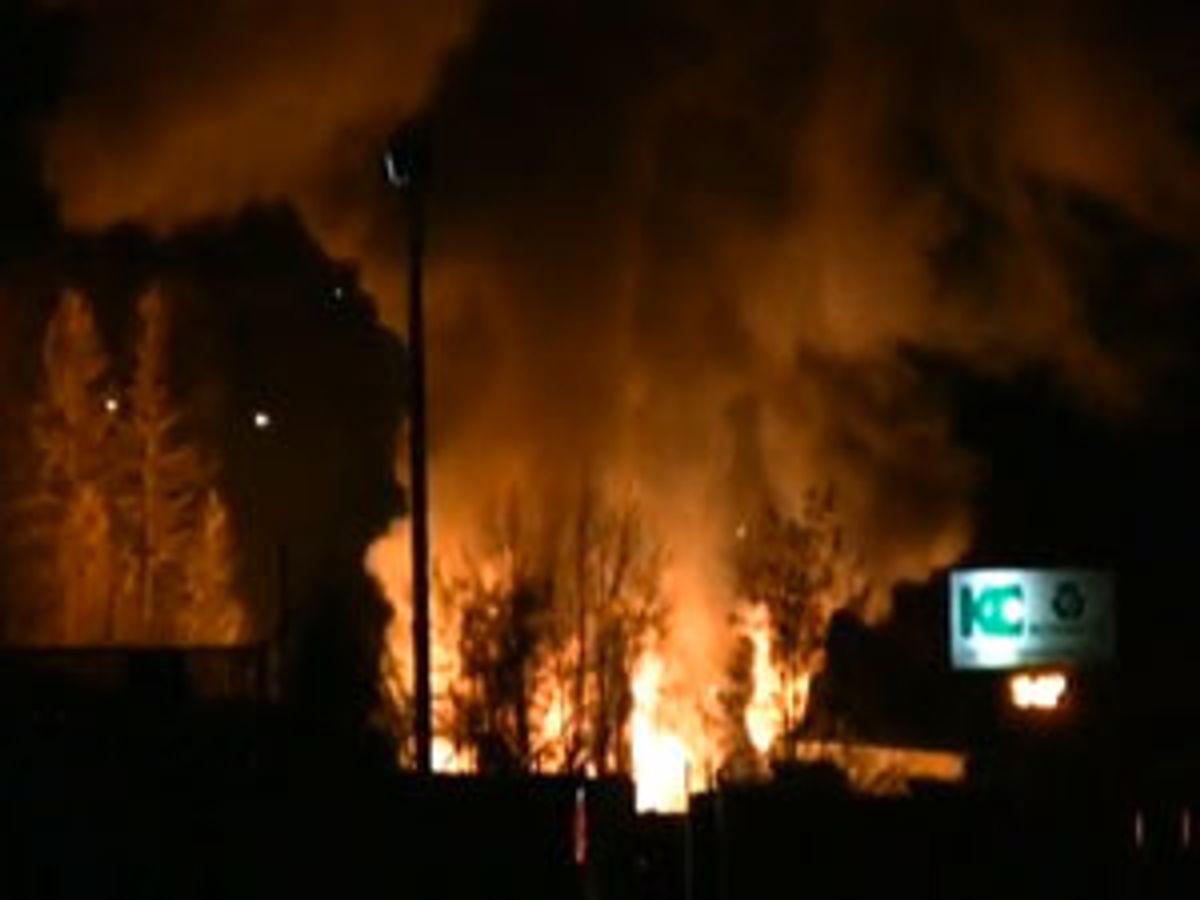Despite the fires aboard two 787 Dreamliners, more and more large-format lithium-ion applications are being rolled out: Jet fighters like the Lockheed Martin F-35 Lightning II and cars such as the Chevrolet Volt and Nissan Leaf are a few such examples. And while investigators today look into the safety of using lithium-ion batteries in the field, important concerns also remain about simply transporting, storing, and recycling them. Later this year, in fact, a United Nations subcommittee will meet to begin revising its safe lithium-ion transport rules to better suit the large-format sizes the industry will be producing in greater numbers. (The rules are nonbinding but observed industrywide.)
At both ends of their life cycle, large quantities of batteries are often grouped, whether on a warehouse pallet or in a battery recycling bin. And the batteries usually carry some charge—it’s like a room full of slingshots pulled back 40 percent of the way.
“Batteries are nothing more than a package of energy,” says Elton Cairns, faculty senior scientist at Lawrence Berkeley National Laboratory. “And if that energy gets suddenly released for whatever reason, you can have a fire or something that acts like an explosion. There is no such thing as a 100 percent safe packet of energy, whether it’s gasoline or batteries or natural gas.”
The battery recycler’s job is particularly challenging, says Brian Barnett, vice president of the technology-development company TIAX, based in Lexington, Mass. Fifteen years ago, Barnett says, he consulted on a recycling program for alkaline batteries. Even though used flashlight batteries and other familiar household cells can tolerate abuse and are hardly known for their volatility, they sometimes still burst into flames when gathered in buckets. “It’s not a straightforward question as to whether a battery is ‘empty,’ ” he says, noting that batteries that seem “dead” for high-power uses like motors could still contain plenty of charge. “People toss them out,” Barnett says, “sometimes reasonably thinking they’re empty.”
In the European Union, containers of used lithium-ion batteries are filled with sand or the silicate material vermiculite to prevent the jumble of batteries from forming a circuit and sparking a fire en route to the recycler, explains Jean-Pol Wiaux, director general of the European Association for Advanced Rechargeable Batteries, in Brussels.
When they do arrive at a recycling facility, the batteries meet a fiery end in a 1000 °C smelter, which separates out half of the materials for reuse. Recyclers can then sell the released steel, aluminum, copper, and cobalt to manufacturers. Volatile components like the batteries’ flammable electrolytes, the same stuff that can make accidental lithium-ion fires so explosive, pose little hazard at the smelter’s high temperature, Wiaux says.
But toxic by-products can be a problem for recyclers that are unprepared for the challenge, he says. The California recycling company Toxco suffered a string of fires at its lithium-ion battery recycling plant outside Vancouver, B.C. It will be opening a new lithium-ion reprocessing center in Lancaster, Ohio, later this year.
One problem is that many lithium-ion batteries today contain fluorine, which readily combines with hydrogen to make hydrofluoric acid (HF). In accidental battery fires, HF is noxious, dangerous to the touch, and an inhalation danger. One of the important post-smelting processes at a battery-recycling center, Wiaux says, is to neutralize the fluorine in the exhaust plume by instead creating calcium fluoride (CaF2), a harmless powder.
Another crucial safety challenge in the life of a lithium-ion battery is in transporting it from its manufacturer to the factory where it’s fitted into the phone, laptop, car, or whatever it will be powering. Here, says George Kerchner, executive director of the Portable Rechargeable Battery Association, the United Nations has done the heavy lifting. A subset of the U.N.’s Recommendations on the Transport of Dangerous Goods concerns lithium-ion batteries. And Kerchner says that electronics manufacturers who order those batteries are well advised to explicitly demand proof from the battery maker that the U.N. standards are being met before the batteries leave the originating factory floor.
“There are billions and billions of cells and batteries manufactured every year,” Kerchner says. “And the industry has a very good safety record for transporting these by all modes of transport.”
Kerchner says the U.N. will be revising its regulations later this year to better suit large-format batteries like those in the Dreamliner. And Wiaux says that Europe—which today recycles 1000 to 2000 metric tons of lithium-ion batteries every year—foresees recycling 10 000 metric tons a year about 10 years from now.
Margo Anderson is the news manager at IEEE Spectrum. She has a bachelor’s degree in physics and a master’s degree in astrophysics.



